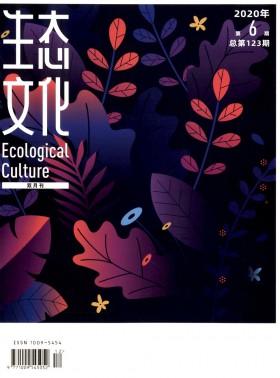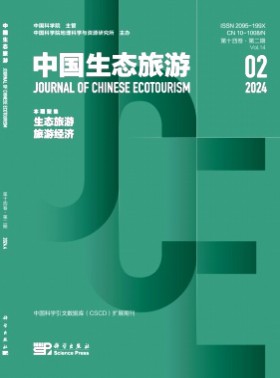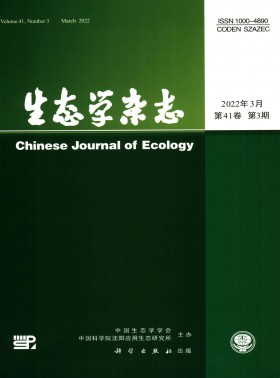前言:中文期刊网精心挑选了生态旅游的发展现状范文供你参考和学习,希望我们的参考范文能激发你的文章创作灵感,欢迎阅读。
生态旅游的发展现状范文1
近年来,由于人们生活水平的提高,社会、经济和科技等方面的发展,生态旅游快速发展起来。它以回归大自然为基调,以保护自然资源、自然环境、促进区域社会和谐发展为目的,提倡人们在保护环境的过程中感受大自然的美丽。在近20年来,生态旅游发展相当迅速,已成为当代世界旅游业发展中最为理想、最有前途、最具发展前景的旅游形式,在世界各国国民经济发展中具有举足轻重的地位和作用。生态旅游正在成为21世纪的旅游主题。
一、生态旅游的起源
生态旅游(Ecotourism)是由国际自然保护联盟(IUCN)特别顾问谢贝洛斯?拉斯喀瑞(Ceballas- Lascurain)于1983年首次提出。 当时就生态旅游给出了两个要点,其一是生态旅游的物件是自然景物;其二是生态旅游的物件不应受到损害。 在全球人类面临生存的环境危机的背景下,随着人们环境意识的觉醒,绿色运动及绿色消费席卷全球,生态旅游作为绿色旅游消费,一经提出便在全球引起巨大反响,生态旅游的概念迅速普及到全球,旅游业从生态旅游要点之一出发,将生态旅游定义为“回归大自然旅游”和“绿色旅游”;针对现在旅游业发展中出现的种种环境问题,旅游业从生态旅游要点之二出发,将生态旅游定义为“保护旅游”和“可持续发展旅游”。同时,世界各国根据各自的国情,开展生态旅游,形成各具特色的生态旅游。生态旅游的产生是旅游业发展到一定程度后出现的必然结果,是人们认识自然、尊重自然、热爱自然、反思人类自身行为方式的表现,也是人类行为方式文明程度的重要标志。生态旅游之所以发展如此快,一个很重要的原因是生态旅游的发展能够促进人与自然的和谐相处,它拉近了自然与人类的关系。是自然与人类的牵线媒介。
二、中国生态旅游的资源情况
中国地大物博,具有发展生态旅游的良好优势。目前,在国内开放的生态旅游区主要有森林公园、风景名胜区、自然保护区等。生态旅游开发较早、开发较为成熟的地区主要有香格里拉、中甸、西双版纳、长白山、鼎湖山、新疆哈纳斯等地区。按开展生态旅游的类型划分,中国目前著名的生态旅游景区可以分为以下九大类:山岳生态景区,以五岳、道教名山等为代表;湖泊生态景区,以长白山天池、肇庆星湖等为代表;森林生态景区 以吉林长白山、湖北神农架等为代表;草原生态景区以内蒙古呼伦贝尔草原等为代表;海洋生态景区海南文昌的红树林海岸等为代表;观鸟生态景区 以江西鄱阳湖越冬候鸟自然保护区等为代表;冰雪生态旅游区;以云南丽江玉龙雪山、吉林延边长白山等为代表;漂流生态景区,以湖北神农架等为代表;徒步探险生态景区,以珠穆朗玛峰、罗布泊沙漠等为代表。
三、中国生态旅游存在的问题及可持续发展对策
中国虽然拥有众多的生态旅游资源,但对这些资源的保护力度不够,加上我国生态旅游的发展大部分还停留在初级阶段,致使中国生态旅游存在不少问题。如生态旅游资源遭受了严重的损害,生态旅游景区建设也存在大量问题,人们的生态环保观念不足,旅游景区经营超载等。针对生态旅游中的问题,应该着力构建我国生态旅游适宜的开发和经营模式,以纠正目前生态旅游发展中的偏差。适宜的生态旅游开发应着重从以下几个方面考虑:
1、生态旅游必须必须坚持科学发展观,制定科学发展规划,合理开发建设旅游资源
生态旅游区建设的最终目的是旅游区生态系统状态最优,主要建设内容是生态建设。生态旅游区建设首先要遵守生态化原则。旅游区的检索要处理好人与自然、旅游者与环境、旅游者与当地社区的关系,建立自然—旅游—社区复合生态系统。其次生态旅游区建设要遵守本土化原则。旅游的基础设施建设必须最大限度地使用当地材料,而且要尽量减少对当地环境的破坏,设施的外观要与周围环境协调一致。再次生态旅游区建设要遵守简朴化原则。生态旅游时更多是追求质朴与自然协调。所以在游览区内,要尽可能减少人工建筑的痕迹。
2、发挥教育、培训的功能,增强环保意识
旅游和旅游业主要是一种大众参与的活动,因此公众的自觉环境意识在生态旅游过程中就显得尤为重要。然而许多人包括旅游者在内,都并不十分清楚环境与旅游发展之间的关系,这就需要通过一定途径提高人们对环境的敏感意识和积极参与解决环境问题的主动性。通过教育和培训,使人们在环境意识、环境道德、环境价值观、环境行为和处理问题的技能方面有所发展。
3、建立相关法律法规,保护生态旅游资源,同时使旅游区的安全得到保障
生态旅游一定要加强环境立法和管理,制定和完善旅游资源开发的政策和法规,我国不少法令都直接与保护旅游资源有关,例如森林法、野生动物保护法等等,在对旅游资源采取预防性措施的同时,对危害和破坏旅游资源的单位和个人给予必要的行政处罚和经济处罚。对造成严重破坏者,要追究有关人员的法律责任。除此之外,旅游景区安全设施建设应得到保障。
4、加大宣传,提倡文明旅游
鼓励和发动公众参与文明旅游。提高公众自身环境意识,减少来自旅游者的环境污染。紧紧依靠和充分利用一切新闻媒体和多媒体演示技术和虚拟现实技术等各种手段,在全社会广泛开展旅游生态环境保护与旅游生态资源不可再生的宣传教育,引导人们重视大自然给予人类的物质及精神财富,尽快培养起生态环境保护意识。
结语:生态旅游作为一种新的旅游形式在中国得到了迅速的发展。虽然也曾出现了这样或者那样的问题,但是,我们有理由相信,这种旅游形式将在未来获得更加广阔的发展空间。
参考文献:
[1] 倪文新.生态旅游的环境问题及可持续发展探析.旅游发展研究,2007年6月.
生态旅游的发展现状范文2
一、辽宁省生态旅游开发现状
作为当前世界发展劲头最为强劲的产业,旅游已经成为当前许多国家新的经济增长点。如何在当前的环境背景下发展旅游业,是旅游经济实现跨越式发展过程中所要考虑的主要问题。对于我国来说,随着经济水平的逐步提高以及国民旅游意识的逐步增强,使得我国国内、国际旅游都在不断快速发展,中国旅游团遍布世界各地。
但是,随着环境问题的不断恶化,旅游业的发展出现了新的考验。在当前的环境背景之下,发展生态旅游成为我国旅游行业发展的重点抉择。我国将生态旅游作为旅游业发展的重点方向,大多数省份都在进行生态旅游资源开发。辽宁省作为沿海省份,有着较为丰富的生态旅游资源,其对于生态的保护也较为到位,所以在旅游资源开发的过程中,生态旅游受到了较多的关注。
目前,辽宁省生态旅游基本以海滨和山地为主,无论是大连金石滩国家旅游度假区,还是大连旅顺口游览区,都已经成为享誉全国、环境较好的旅游胜地。在辽宁,山地与丘陵占据了三分之一的土地面积,无论是千山山脉还是半岛地区,都能够以生态旅游作为主打的旅游发展规划。在辽宁省的山地资源中,如松岭、黑山等地,其海拔主要集中于300米到500米左右,较为适合参观者进行游览,能够保证生态旅游在当地受到环境的支持。而辽宁作为北方少数民族居住地之一,在当地民族融合的过程中吸收了多民族文化的精髓,以此为生态旅游的开发资源,不仅能够促进辽宁省少数民族的发展,还能够令游客正确认识我国民族文化。
总体来说,辽宁省当前生态旅游发展较为迅速,其丰富的森林资源、海边文化都吸引了无数游客前往。但是,在这样的发展现状之下,辽宁省依然不能被称为我国旅游大省,无论是当地旅游管理人才的缺乏还是客源与市场发展不足,都导致在辽宁生态旅游开发的过程中产生了多个方面的制约因素,令辽宁省基本的生态旅游市场呈现退化的趋势。这样的发展现状,令辽宁省的旅游发展难以与其丰富的资源相匹配,想要保证提高当前旅游管理水平,就需要从存在的基本问题入手,分析形成的原因,提出合适的对策,全面改变当前辽宁旅游业发展弊端,大力发展生态旅游,进行旅游发展良性转化。
二、辽宁省生态旅游开发原则
对于辽宁省生态旅游开发来说,因为不同因素所导致的问题阻碍着旅游资源的利用,在生态旅游开发的过程中,需要进行多方面资源平衡,保证在遵守一定开发原则的前提下,大力发展生态旅游业。根据辽宁省生态旅游资源与环境条件,综合生态旅游发展现状,提出生态旅游开发原则。
(一)可持续开发原则
辽宁省作为拥有丰富自然景观的一个省份,其发展可以在一定程度上依赖于旅游业。但是,生态旅游开发却需要从多个角度进行考虑,在保证商业用途与保护用途不相抵触的情况下再进行发展,才能够真正意义上达到一定的经济效益。在可持续开发的过程中,相关人员应该注意对于自然资源的保护,不能够为了创造更大的经济收益,而忽略了基本的资源保护工作。在开发的过程中,应该注重采取以保护为主的开发利用方式,减少人为建设对于环境的破坏,从最大限度上保护资源的可持续发展。只有从科学发展观的角度,实现旅游资源及市场开发过程中的可持续发展,才会为今后辽宁省旅游业的繁荣打下坚定的基础。同时需要强调的是,可持续发展的原则应该从开发方式及开发观念入手,探究出具体的实施方案及实施步骤,从而将可持续发展的原则落实到具体的操作层面,实现更大的、更好地发展前景。
除此之外,在生态旅游产品开发的过程中,需要使资源利用能够对当地的居民以及环境产生良好的影响,保证生态旅游资源能够为当地发展提供帮助的基础上,才能够令旅游与当地经济发展互相融合,共同促进。总体来说,自然生态资源旅游开发,就是从科学的角度保护和利用资源,遵循人与自然协调发展的原则,使辽宁省的旅游业发展能够可持续进行。
(二)适度开发原则
纵观我国当前旅游业发展,因为巨大经济利益和多方面影响力,导致了各地都在对于当地存在的生态旅游资源进行过度开发,从多个方面开发可能受到旅游市场欢迎的旅游景点,作为国内旅游业普遍存在的问题,辽宁省生态旅游开发也不例外。在这样的发展背景之下,辽宁省生态旅游开发更应该以适度开发作为旅游发展的基本原则,无论是在自然资源还是人文资源的开发中,都能够给与传统的文化和环境留下适度的空间,要通过现代化的手段在进行资源发掘的同时,设置旅游。一般来说,一个旅游地并不能开放全部的地区作为游人参观的景区,一些较为敏感或者较为脆弱的地区需要设置为旅游,相关的管理者保证能够较好的控制旅游的游览范围,对于未开放的地区进行合理的保护。
在旅游发展的过程中,适度开发不仅是对大自然和传统历史文化的一种尊重,一定意义上还是通过不同手段来保证旅游者的安全,能够以设置禁地的方式令普通游客远离可能出现危险的区域,在保证了旅游趣味性的同时,还能够得到有效的人身保护。对于辽宁省来说,因为其自然生态资源大部分是森林或者海洋,所以可能出现危险的因素,保证适度开发,开放能够正常游览的区域作为游客的探索之旅,是其生态旅游业发展过程中所需要遵循的基本原则。
(三)双赢原则
在当前资本经济市场化的过程中,如何提升各个行业的经济收益,保证能够在社会上更好的寻求自身的发展,是当前各个领域经营所需要考虑的重要问题。在这样的背景之下,生态旅游业的发展也需要以双赢作为开发的基本原则。旅游业是通过接待不同地区的消费者进行本地区的游览来赚取费用,在这个过程中,其所取收益不仅需要令当地的居民获得较为满意的收入,还需要保证能够将一部分资金用于生态资源的保护,在这项庞大的额外支出之下,辽宁省各个旅游公司都在寻求不同的游客接待方案。在双赢原则中,要尽量的从市场发展的角度,探究发展的路径,将开发过程中的各方利益进行很好地整合,建立辽宁省旅游资源开发的长效机制。
在当前辽宁省的生态旅游中,双赢策略是基本也是最难达到的目标。如何以最小的开发利用来完成最为舒适的旅游体验,其实施过程较为艰难。但是,各个旅游单位并不能忽略这一基本原则,一旦忽视了对于当地居民收入的保证,减少了对于辽宁省生态旅游的开发,那么就有可能导致生态旅游与普通大众旅游难以进行区分,令旅游者难以享受到生态旅游中大自然的美景和乐趣,这样的行为可能令当前的生态旅游发展走入困局。
三、辽宁省生态旅游开发对策
近年来,我国旅游业的快速发展,以及生态与环境问题逐步得到重视,给生态旅游发展带来巨大契机,发展生态旅游产业,成为当前社会的热门话题。但是,生态旅游并不同于其他基本的旅游方式,其中对于自然环境的保护与开发,需要管理者进行平衡,保证其能够以最为合理的方案达到最为合适的效果。以辽宁省当前的生态旅游发展来看,我们可以发现因为自然环境因素等方面的限制,在策略制定的过程中需要遵守不同的原则,如何在以保护生态为前提的同时,还能够保证最大限度的提高生态旅游发展,对此,本文从多个角度出发,浅析辽宁省生态旅游发展对策。
(一)依法管理生态旅游
在我国旅游业的发展历史中,长期以来旅游业发展较为缓慢,在改革开发之后,旅游也迅速腾飞,突然爆红,成为新的经济增长点。但是在旅游业发展过程中,旅游管理法律还存在一定漏洞,相关法律对于经营者的管理力度不强,令各种旅游资源尤其是生态资源在开发的过程中难以得到有效的保护,在生态环境受到破坏的同时,也使得生态资源不能够进行合理的、可持续的发展。
从辽宁省的生态资源发展的过程中我们可以发现,因为其开发力度过度而导致的周围环境受损问题已经非常严重,在未来的生态旅游经营策略中,管理者需要按照相关法律对于环境进行保护和维修,令其能够适应在当前旅游环境下景区的需求。一旦生态旅游的开发缺少了相关法律以及管理措施的维护,那么过度开发问题将会是困扰生态旅游未来发展的重要难题。纵观不同国家的生态旅游发展历史,因为缺少完善的管理体系约束以及国家的法律维护而导致的资源破坏问题,还是难以解决的弊端。在这样生态旅游发展历史下,以可持续发展作为基本的发展策略,加强管理与法律维护,能够极大促进当前生态旅游的发展。
在进行管理的过程中,除了旅游开发者要遵守相关的法律法规之外,还需要以辽宁省当地的生态环境作为基本研究对象,从多个角度科学合理地进行方案的制定,以长远的目光来制定相关的开发规划方案,对于旅游景点的建设和规划体系采取完善且详细的方案,保证能够从全局的角度来发展生态旅游,从根本上改善辽宁省当前生态旅游的弊端,保证生态旅游能够达到经济与环境双赢的发展。
(二)突出生态特点与产品特色
对于辽宁省来说,其生态旅游发展不能够完全照搬其他省份或者国家的发展模式,而是从自身拥有的生态环境类型出发,保证生态旅游能够突出属于辽宁省不同的环境与产品特色,借此在我国的生态旅游景点脱颖而出。例如辽宁省有许多风景人文独特的山地资源,就是开发特色生态旅游产品很好的生态环境,在辽宁鞍山附近,其药山就属于有着辽宁本地特色的一大旅游景点。该景点因为在古时盛产药材而出名,有着自身不同的特色,不仅植物资源费丰富,其生态美感所受破坏较小。在这样的环境资源影响之下,天然植物园是其生态旅游重要的一个宣传和发展特色。因其有着环境生态美和历史上以药材出名的产品特色,无疑能够为当地的生态旅游发展做出极大的贡献。从这样的发展实例中我们就可以了解,突出环境与产品特点,尽力打造不同于国内其他生态旅游景点的生态风景,以特殊的产品特色来吸引游客,是辽宁省当前发展的重要措施。
除了山地资源之外,辽宁滨临黄、渤海,有许多海滨生态资源。例如大连作为辽宁一个较为特色的海边城市,有着自然的海上资源,不仅气候怡人,还能够欣赏山地与海洋相互交错的美景,是辽宁重要的海滨旅游胜地。在这样的景点特色背景之下,发展旅游度假村,能够保证将自然生态环境与旅游度假进行完美结合,将各个风景集中到一起,使旅客能够得到较为完善的生态旅游行程,得到更好的生态旅游体验。在突出特色的同时,辽宁省旅游资源的开发应该对旅游资源进行优化与整合,减少开发过程中出现的旅游资源的重复性开发,避免旅游资源“同质化”的问题,真正打造独具特色的旅游品牌。
(三)加强生态旅游设施建设
在辽宁省当前的生态旅游发展中,其旅游开发还不甚完善,相关的旅游基础设施建设不到位,导致其在一定程度上发展停滞。目前,辽宁省境内的多数生态旅游景点无论是在交通条件方面还是在基础服务水平上,相对我国当前热门生态旅游省市都有着一定差距,这样的问题令顾客在进行旅游的过程中很难得到满意的服务,出现了许多问题,令其生态旅游口碑在业内有所下降。在这样的背景之下,提高生态旅游基础设施的建设,保证旅客能够在游览的过程中享受较为体贴完善的服务,是辽宁省生态旅游发展的重要对策。在交通方面,辽宁省需要保证将国道、省道质量进行改善,减少因为交通堵塞可能出现的问题,保证到各大生态旅游区的交通方便。在辽宁省主要的四个山地之中,建设和完善主干道的开发,在保证旅客安全的前提下令各个主干道能够适合高峰人群流量。
在辽宁省生态旅游服务接待方面,应该以不同生态旅游景点作为重点开发的对象,在各个景点周围建设具有地方生态特色的接待宾馆,保证外观和内部服务管理都能够达到良好水平。增加目前辽宁省各生态旅游景区所拥有的床位数量,保证旅客能够享受到良好的住宿环境。除此之外,还应该引进相关的生态旅游开发、服务管理等方面的人才,保证能够以科学管理来提升当前辽宁省的生态旅游基本服务质量,保证全面提高当前环境下辽宁生态旅游的服务水平。生态旅游配套设施的完善,在一定程度上影响着游客的“回头率”,我们应该从细节入手,从游客的消费心理入手,完善旅游基础设施,为辽宁省旅游业的发展奠定一个良好的物质基础。
四、结论
生态旅游的发展现状范文3
关键词:营销环境 生态旅游 SWOT分析 长青自然保护区
自然保护区生态旅游营销是指自然保护区通过综合营销手段和途径与旅游目标市场(包括现实消费者和潜在消费者)进行全方位沟通,从而建立自身作为旅游目的地的鲜明市场形象,并最终实现自然保护区生态旅游产品的全面销售。
一、研究区域概况
陕西长青国家级自然保护区位于秦岭中段南坡腹地,地理位置东经107°17′~107°55′,北纬33°19′~33°44′,2001年获世界旅游组织“绿色环球21”国际认证,2005通过专家评审被列为“五级”生态旅游资源单体和中国秦岭自然保护区群(GEF)建设的重点项目、陕西省 “十一五”重点打造的生态旅游建设项目。2009年该旅游区又被授予“中国最佳文化生态旅游目的地”称号。
二、长青自然保护区生态旅游发展现状
目前,长青自然保护区已初步形成了“一条生态主线、四大功能分区以及多个主题景区”的规划框架。“一条生态主线”,即生态旅游是长青自然保护区开发的主题,是建立在严格保护区内珍稀野生动植物资源及其栖息地生态环境基础之上的。“四大功能区”即杨家沟生态休闲区、苍耳岩古道科考区、东坪石塔河森林探险区、朝阳山宗教文化区,满足游客多样化的需求。
三、长青自然保护区生态旅游营销环境的SWOT分析
(一)优势(Strengths)分析
1.长青具有得天独厚的生态旅游资源
长青保护区总面积 30 平方公里,规划旅游区面积 15.5 平方公里,区内自然景观包括地质、地貌、气候、水文、动物、植物等,以高、寒、奇、险、特为特色。最高峰兴隆岭 3071 米,是秦岭南坡著名的“九岭”之最。其生物多样性被誉为古老孑遗植物的避难所和秦岭野生动物的乐园,尤以“秦岭四宝”——大熊猫、朱
、羚牛、金丝猴为著称。
2.有一定知名度
“四大国宝”——朱
、大熊猫、金丝猴、羚牛在同一区域同时出现在长青自然保护区,特别是秦岭大熊猫在区内分布密集,目前已通过国际“绿色环球21”旅游组织的注册认证,加入了“中国人与生物圈”组织。
3.已获得的一部分生态旅游开发、经营和管理经验
佛坪保护区等部分生态旅游景区,在结合自身特点的基础之上,提出了许多有价值的生态旅游开发模式,在规划、开发、经营、管理等方面给了长青一些宝贵的经验,也为长青保护区生态旅游的发展提供了借鉴。
(二)劣势(Weaknesses)分析
1.对生态旅游的认识和理解不足,生态旅游市场需培育
由于国内生态旅游市场还很不成熟,国民生态意识还十分薄弱,生态旅游景区多位于贫困的地区,导致环境破坏的屡见不鲜。
2.市场营销明显不足
据2004年汉中市旅游局所做的旅游市场调查分析显示,约有70%的游客选择汉中作为其生态休闲旅游目的地(远远高于全国平均40%的水平),然而,在游客感兴趣的旅游景点中,长青自然保护区生态旅游排在第十位。这说明长青旅游整体形象还不够明确和鲜明,宣传范围和宣传力度还不到位。
(三)机遇(Opportunities)分析
1.国际、国内生态旅游者不断增加
据世界旅游组织统计,世界旅游业以每年4%的速度增长,而生态旅游的增长速度却达到了20%-30%。根据对到汉中来的旅游者所做的一项调查显示,在长青生态旅游区开发建成以后,愿意到长青来参与生态旅游的游客占全部游客的80%。
2.省政府对发展生态旅游的重视
长青作为省政府确定的“十一五”重点旅游建设项目,以被省政府确定为继临潼“兵马俑”第一条国际知名旅游品牌后,全力打造的第二条国际旅游品牌。
(四)威胁(Threats)分析
1.缺乏旅游经营及从业者可持续旅游意识
多数旅游组织者重视直接经济效益,生态旅游意识薄弱。现阶段的旅游组织者们,大多数都把关注的目光放到了能直接产生经济效益的设施上,对生态旅游可持续发展方面的关注就相对少了很多。
2.缺少旅游环境监测管理体系
生态旅游要达到旅游资源的可持续利用,就必须有专门的旅游环境监测体系。但目前由于生态旅游还处在起步阶段,与生态旅游相配套的生态环境监测与管理体系还没有建立。在许多旅游景区内还没有科学地监测仪器和设备,环境管理、游客管理的水平还不高,由此带来了一系列负面影响。
通过以上SWOT分析显示,长青生态旅游产品有着强大的市场竞争优势,市场营销潜力是巨大的。然而,“劣势”中的一些制约因素目前和将来会影响市场潜力的发挥,长青应尽快采取多种措施克服劣势,同时率先采取灵活多样的营销手段,抢占生态旅游市场,成为全省乃至全国首选生态旅游目的地。
参考文献:
[1]何红.陕西长青——华阳生态旅游市场调查与对策研究[J].襄樊学院学报,2010.8
生态旅游的发展现状范文4
【关键词】太平湖;生态旅游;问题;对策
1 黄山太平湖风景区概况
黄山太平湖是皖南最大的人工湖,位于安徽省黄山市。风景区总面积312.9平方公里,水域面积88.6平方公里,24亿立方米是最大蓄水量。太平湖处于合肥到黄山黄金旅游线上,有“东方日内瓦”之美誉。并获得中国热点湖泊旅游胜地、国家AAAA级旅游景区、中国最美的地方、2007年获国家湿地公园称号。
2 黄山太平湖风景区生态旅游发展现状
安徽省虽然高度重视开发“两山一湖”,但是太平湖旅游资源的开发、保护、发展现状不容乐观。
太平湖属于高山峡谷型湖泊,所处位置是自然山谷,常年清澈。水体景观是天然水体景观,湖水景观美感度较高。植被丰富是太平湖风景区又一特点,森林覆盖率达95%,树种约400多种,花木有183种。景区中的游览区有大面积绿化,但是种植绿化植被时并没有充分考虑乡土植被的采用,大面积种植马尼拉草,违背了生态旅游区建设的原则。
太平湖使用的大部分是燃油船,参团游客基本是靠燃油车参观游览,也有部分的竹排和摇橹船。太平湖每艘游船都配有救生衣,登上游船之后会向游客讲解安全知识,湖周围有实时监控人员,安全措施较好。太平湖区较大,园内餐饮业分布较散、规模较小,并未形成特色生态餐馆。
3 黄山太平湖生态旅游发展存在的问题
3.1 太平湖生态旅游资源丰富但缺乏生态旅游产品
太平湖的湖水达国家一级水质标准,水质优秀,主要源自黄山和九华山的溪水;湖的两岸山峦叠嶂,覆盖率达95%。生态旅游资源丰富当并没有充分利用当地资源,生态旅游产品开发层次低,尚没有形成别具特色的生态旅游产品,对生态旅游者缺乏吸引力。
3.2 发展过程中政府支持力度不足,对外宣传滞后
太平湖所在的黄山区,即原太平县,是典型的经济欠发达“八山一水半分田”的山区,财政投入严重不足。当地旅游社对太平湖的宣传不到位,网络营销很少。太平湖又处于黄山脚下,黄山是世界双遗产,名气大,吸引力强,大多数游客是直奔黄山而来,忽略太平湖风景区。
3.3 风景区面临生态旅游特色丧失
太平湖风景区建设进程缓慢面临湿地生态旅游特色丧失,观光旅游开发以及周边旅游酒店景观房产发展较快等建设对其造成的环境影响。在调查中风景区生态保育区出现游客举行篝火晚会造成草地斑秃现象,这对风景区原有的生态造成严重破坏,相关的保护措施滞后。
3.4 社区居民参与度低
太平湖社区居民受教育程度总体不高,对生态旅游的认识层次偏低。并且没有开展相关培训,社区内没有完善的服务设施。没有明确的参与机制和社区利益分配制度模糊。
3.5 发展生态旅游没有与休闲度假旅游结合
随着未来生态旅游发展进步,旅游消费将由观光旅游转向生态旅游度假。太平湖风景区是名副其实的天然氧吧,景区内空气负氧离子浓度长期稳定在每立方厘米20000个以上,是一线城市的数十倍,空气质量优良率达100%。太平湖水体常年达国家一级标准。拥有得天独厚的生态条件符合都市人对环境质量的要求,太平湖风景区拥有的资源是非常有利于发展生态休闲度假游的,但是现实的情况是游客在太平湖停留的时间在半天到一天左右,过夜游客很少,并没有实现休闲度假旅游。
4 太平湖风景区发展中问题的解决对策
4.1 开发适宜太平湖生态旅游的旅游产品
太平湖要发展生态旅游,存在潜在威胁,这就要求太平湖风景区必须要树立自己独特的生态旅游品牌,推出生态旅游者乐于参与的生态旅游产品,只有这样才能在周边强敌中脱颖而出,带动周边经济的长远发展。
4.1.1 观光度假生态旅游产品
太平湖风景区内风景优美、独特,空气清新,自然生态环境极佳,游客来到此次必能体会轻松与愉悦。太平湖风景区应加大投资建立生态度假区,开发生态度假产品。
4.1.2 观鸟生态旅游产品
太平湖的生态保育区是典型的河口湿地和草本沼泽湿地,约10.24平方公里。常见国家级和省级保护鸟类共52种。每年都有广受喜爱的数万只鹭鸟、雁鸭来此栖息。但每年来此观鸟的游客仅为数百人,因此需要着力开发观鸟旅游产品,可以加大宣传力度,如每年举办观鸟摄影大赛,评选出优秀作品利用媒体手段进行宣传,形成优势产品,吸引更多观鸟爱好者前来驻足游览。
4.1.3 观猴、观蛇生态旅游产品
太平湖湖内有猴岛、鹿岛、蛇岛旅游度假区,但名气较小,据调查70%游客来太平湖风景区之前并不知道有此类旅游产品。太平湖风景区应以此作为优势资源进行资源整合,扩大游客与动物参与度。对外加强宣传,以此作为特定客户群的吸引点。
4.1.4 垂钓、捕鱼生态旅游产品
当地居民在太平湖内养殖,作为农业之外的副业并没有对游客开放,湖区内垂钓的一般也是附近居民,游客几乎没有特地来此垂钓。此类资源可以作为参与度很高垂钓和捕鱼产品,需要当地各方面协作完成。对外同样要进行积极宣传,着重强调生态自然性和体验性。
4.2 加大投资,加强宣传力度
4.2.1 政府应重视对太平湖风景区的投资
太平湖是安徽省旅游发展战略重要内容之一,太平湖作为湖泊生态旅游极具旅游发展优势,当地政府应增加投资力度,对提高当地知名度和增加财政收入有很大促进作用。
生态旅游的发展现状范文5
关键词 沙产业;现状调查;发展对策;宁夏中卫;沙坡头区
中图分类号 S775 文献标识码 A 文章编号 1007-5739(2013)20-0185-02
中卫市沙坡头区位于宁夏回族自治区西南部,地处腾格里沙漠东南前缘,深居内陆,远离海洋,靠近沙漠,属半干旱气候,具有典型的大陆性季风气候和沙漠气候的特点,年平均气温7.3~9.5 ℃,年均无霜期159~169 d。春暖迟、秋凉早、夏热短、冬寒长,风大沙多,干旱少雨。年均降水量179.6~367.4 mm,年蒸发量1 829.6~1 947.1 mm,年蒸发量是年降雨量的10倍,土壤荒漠化程度严重,特别是腾格里沙漠长期处于“沙逼人退”的困境。20世纪50年代,由于包兰铁路穿越腾格里沙漠,为保畅通,中科院1955年在中卫市成立了沙漠研究所,通过科研人员艰苦卓越的探索,在1958年发明的独特防沙治沙技术——扎麦草方格技防沙治沙技术,创造了人类治沙史上的奇迹,引起了世界的关注。中卫市沙坡头区的防沙治沙取得了举世公认的功绩。经过将近60年的努力,沙坡头区防沙治沙及沙产业培植工作也取得了一定成果。但是沙坡头区在发展沙产业上,也还存在部分问题。为此,对沙坡头区的沙产业及防沙治沙的发展现状进行了调查研究,对取得的成就进行了归纳总结,对存在的问题进行了认真梳理,针对当地沙产业及防沙治沙现状,提出了今后发展的合理化对策。
1 中卫市沙坡头区沙产业及防沙治沙的发展现状
1.1 取得的成就
多年来,由于特殊的地理环境和气候条件,决定了沙坡头区通过防沙治沙来改善生态环境的重要性。历届党委、政府立足实际,始终把防沙治沙、搞好沙区治理当作改善生态环境、促进国民经济发展的重点工作来抓,积极争取项目资金,大力发展沙产业,鼓励和支持企业、单位及广大群众广泛参与防沙治沙开发建设,加快了沙坡头区防沙治沙的建设力度,使防沙治沙及沙产业的发展取得了可喜成就。
(1)北部沙区形成的林纸一体化产业取得了显著成效。在北部沙区中冶美利集团以生产纸浆原料林为主的速生林基地10年来得到快速发展。每年以1 666.67 hm2的建设面积迅速扩张,目前该基地已发展速生林逾1.73万hm2,产值超过13亿元以上,在取得了相当的经济效益的同时,还在中卫北部腾格里沙漠前缘形成了一道防沙治沙的绿色长城,实现了由“沙逼人退”向“人进沙退”的转变,林纸一体化产业取得了显著的社会效益、生态效益及经济效益[1]。
(2)北部沙区和香山北麓形成的林果一体化产业促进了沙区农民的增收。沙坡头区形成了以碱碱湖为核心区的葡萄产业,以香山北麓台阶地为核心区的苹果、红枣及枸杞产业等成为沙区群众增收致富的支柱产业,截至2012年底,经济林产业栽培面积为7.54万hm2,总产量达到30.55万t,总产值达到29.72亿元。
(3)北部沙坡头景区为核心辐射形成的林景一体化产业促进了地方旅游的大发展。沙坡头区不仅在防风固沙上取得了举世公认的成就,在开发沙漠旅游上取得了巨大成功,如今沙坡头景区已是国家5A级景区,昔日令人谈之色变的万里黄沙已经成为人人向往的美景胜地,并以沙坡头旅游景区为龙头,建设了水稍子沙漠旅游区、腾格里金沙岛沙漠湿地森林旅游区、寺口子旅游区等一批沙漠旅游区,沙漠旅游年接待国内外游客200万人次,旅游收入达7亿元。
(4)北部沙区工业园区形成的林能一体化产业初具雏形。在北部沙区工业园区,充分利用沙区光照等自然资源充沛的优势,在沙漠腹地规划发展太阳能光伏发电产业项目1 000 MW,风能发电产业项目已装机247.5 MW,引进新疆广汇和上海申能集团合作规划建设的4 000 MW发电项目,沙区能源产业初具雏形。
(5)横穿北部沙漠的包兰铁路及201省道两侧防沙治沙成果走在世界前沿。在长期的治沙实践中,创造了麦草方格治沙技术和“五带一体”铁路防风固沙体系,解决了防沙治沙的世界性难题。中卫市沙坡头区这一治沙成果受到联合国环境规划署的肯定,1994年沙坡头治沙成果荣获“全球环境保护500佳”称号。
1.2 存在的问题
认真总结防沙治沙及沙产业培植工作,主要存在以下问题:一是防沙治沙建设形势严峻。虽然沙坡头区防沙治沙取得了显著成效,但由于沙坡头区荒漠化土地面积较大,又地处宁夏中部干旱带,大面积宜林荒山荒沙尚未得到有效治理。植被稀少,地表,水土流失依然严重,干旱和沙尘暴灾害发生频繁,野生动植物物种较少,生态环境十分脆弱,防沙治沙及沙产业的建设任务仍然繁重而艰巨[2-3]。二是经济回报率低。大多数沙区由于立地条件限制,林业建设以生态效益为主,因林业生产周期长,经济效益回报率低,一定程度上影响了群众投资沙产业开发的积极性。三是林业投入不足,激励机制尚不健全。沙坡头区为经济欠发达地区,对防沙治沙的投入有限,目前防沙治沙建设费用主要依托国家投入的项目资金,而国家项目支持的资金有限,投入不足,使沙产业发展严重存在着配水不足、科技人员服务功能不全、沙产业开发技术服务不到位、整体科技含量低等现象。投入不足和沙产业发展的矛盾日益突出,制约了沙产业的快速发展[4]。
2 今后的发展对策
现结合沙坡头区实际,提出促进沙产业发展的对策:一是借国家发展林下经济的机遇,大力发展林果种植、林下种植、林下养殖,提高沙漠林业的综合效益,促进沙产业的可持续健康快速发展。二是以当地丰富的光热资源及广阔的沙漠土地为依托,制订优惠政策,引进资金和企业,鼓励发展风能发电和光伏发电等,促进沙产业的快速发展。三是以中卫市建立生态旅游城市为契机,积极开发沙漠旅游,以沙坡头生态旅游区为核心,辐射带动周边地区发展具有地方特色的沙漠旅游景区,并带动发展餐饮、商品零售业,建立建成具有国内影响力的生态旅游胜地,以促进沙产业的快速发展[5]。
3 参考文献
[1] 金正道.我国沙产业发展现状及对策建议[J].林业经济,2011(1):36-39.
[2] 张翠红.宁夏中卫市沙坡头区林业产业发展初探[J].宁夏农业科技,2011(9):39.
[3] 任莹,王文略,高立国.西部特色沙产业发展现状及可持续发展对策——以甘肃省民勤县为例[J].甘肃科技,2013(3):6-8,26.
生态旅游的发展现状范文6
1.1六盘山旅游区概况及发展现状
六盘山地处我国西北干旱半干旱地区,北起宁夏海原,一直延伸到甘肃和陕西境内,是近南北走向的狭长山地.六盘山国家森林公园地处宁夏南部的固原市,处于银川、兰州、西安3个省会城市的中心地带,总面积6.78万hm2.1986年被国务院批准为国家级自然保护区,后成为国家级森林公园.该区域森林覆盖率达72.8%,是黄土高原的重要水源涵养地,有黄土高原的“绿岛”和“湿岛”之称,夏季气候凉爽宜人,生物资源丰富多彩[8].目前已形成了以小南川、野荷谷、二龙河、凉殿峡等7大景区60多个景点的自然生态旅游区.六盘山地区自2000年批准成为我国首个国家级旅游扶贫试验区以来,旅游业获得长足发展.2011年,试验区接待国内外游客突破160万人次,旅游收入达6.40亿元[9],据统计当地农民参与旅游业的人数超过2万[10].近年来,六盘山旅游区开始实施从观光型旅游向休闲度假型旅游的转型,但是游客数量的增加和旅游方式的变化也给景区带来了一系列的影响.如旅游高峰期景区的生态压力骤增,游客对旅游产品多样化的需求日趋强烈等,这些都是亟待解决的现实问题.本研究拟通过对游客进行问卷调查,从游客体验角度了解六盘山旅游区当前存在的问题及其原因,进而为该地未来的旅游发展提出可供参考的建议.
1.2研究方案设计及实施
结合研究目的和研究区域的特点,设计出本次调查所使用的问卷,问卷主要调查游客对六盘山主要旅游区(点)的满意度和对该地生态旅游开发所持意见.2013年7月,在六盘山森林公园内进行预调查之后,根据预调查结果对问卷进行调整,并最终确定调查内容:含旅游市场、旅游吸引力、游客责任三大版块,其中对游客责任自我认知的调查在之前该地的相关研究中很少涉及到.在调查问卷中,对旅游者态度和观点的调查主要设计了封闭式问项,采用了常用的五点计分法;设计了一些开放式问项以获得游客的主要看法.
2实证研究
2.1问卷调查概况
2013年8月,研究团队在景区进行正式问卷调查.首先确定抽样地区与对象:抽样地点为六盘山森林公园和野荷谷景区,抽样对象为到景区旅游的游客,调查采用了随机抽样的方法.在调查的过程中,根据研究目标和调查问卷本身的结构,同时也为了便于被调查者做答、避免漏填,采用了面访调查的方法,由调查者转述问卷内容,口头询问并根据游客回答填写问卷.由于采用了面对面的调查方式,问卷的有效性较有保障.共抽取样本200个,回收有效问卷187份,有效率为93.5%,达到调查有效性的要求[11].
2.2实证分析
2.2.1调查样本基本数据分析
抽样人群的人口统计学特征见表1.此次被调查的游客群体中,游客的性别比例基本均等,男性游客比女性游客略高3.8%.被调查游客在各个年龄段均有分布,且差异不大;其中年龄在31~40岁的游客最多,但也仅达到23.0%,与其他年龄段游客数量差距不大.由于六盘山主要的旅游区(点)海拔不高,旅游强度不大,因此适宜各个年龄段的游客参与.被调查游客中“大专或大学本科”及以上学历的游客较多,占总数的64.7%.通过分析软件得知,高中及以下学历的游客多为老年游客,这一状况基本与实际相符.在被调查游客的职业分布中,公务员和教师数量最多,两者共占被访者总数的40.1%;依次降序为企业员工、医务工作者、其他职业者、学生和私营企业主.数据表明,六盘山旅游区对从事各种职业的游客均具有一定的旅游吸引力,但其中因教师与公务员这2个职业的从业者工作相对稳定,休闲时间比较固定,因而外出旅游的频率更高.在出游方式上,个人出游者占总数的46.5%,接近半数;其余为参团和单位组织,两者比例差距不大.未来的旅游市场开发中,应在稳定主体旅游客源基础上积极拓展比例偏低的客源市场.
2.2.2旅游市场发展现状调查
根据预调查反馈的情况,选取了六盘山旅游区中游客前往较多的4个景区为主要调查项目,其他景点包含在“其他”选项中;根据研究目的分别设置了单选和多选项.调查问卷的数据分析见表2.在六盘山旅游区各景点中,旅游者游览最多的是六盘山森林公园,比例高达71.7%;其次分别是野荷谷、胭脂峡和老龙潭.森林公园是六盘山旅游区最主要的景区,且公园内景点分布集中,因此往往成为游客的首选旅游目的地.游客最满意的景点中,排在前列的依然是森林公园和野荷谷景区,其次为老龙潭和胭脂峡;选择“其他景区”的游客占6.4%.被调查者认为最不满意的景点集中在“其他”选项,经研究人员询问并统计,游客反映集中在凉殿峡和“鬼门关”2处.游客有重游意愿的景区首推森林公园,占44.9%;其次为野荷谷、胭脂峡、老龙潭;选择“其他景区”的游客占13.9%.
2.2.3旅游吸引力现状调查
为了解游客在六盘山旅游区游览过程对景区的认知和评价,调查问卷依据六盘山旅游区现状及预调查的结果设计了相关项目,游客根据自己的旅游经历进行选择,为了便于统计,使用了五点计分法,统计结果见表3.作为西北干旱地区的“绿岛”,六盘山旅游区的自然风光得到了绝大多数游客的认可,对该地“自然风光优美”持赞同态度的游客共占被调查者总数的97.9%.对旅游区的生态保护持赞同态度的游客占总数的68.5%,有30.6%人对此持反对态度.持反对态度的游客则认为,在旅游过程中发现当地居民在林区随意采摘松子,折树枝烘烤松子.他们认为这种行为对森林生态保护不利.此外,也有游客反映,目前森林公园内的景区交通车全部为汽油车,尾气排放对生态环境也会产生一定影响.对于“气候宜人”一项,有77.6%的游客持赞同态度,但有22.5%的游客对此并不认同.调查中经询问得知,调查的时间恰逢六盘山避暑旅游的旺季,而该地秋冬季节气温低,游客数量少,这部分游客主要出于该地旅游季节性的考虑.对于旅游区的民族风情,持中立和反对态度的游客(57.9%)超过了持赞同态度的游客(42.3%).由此可知,六盘山旅游区目前在民族风情相关的旅游事项吸引力不足.在目前景区管理现状的调查中,对“景区管理规范”问项持中立(16.6%)和反对态度(39.1%)的游客比例高于持赞同态度(44.4%)的游客.被访游客反映的问题集中在以下几点:小南川水路一线徒步行走需要的时间超过半小时,但水路一线均没有卫生间,给游客造成困扰.大多数景区(点)都存在旅游标识不清晰的情况,造成游览中的不便.多数有水体景观的景点,沿河一侧的步道或栈道规划建设不合理,存在一定的危险性.也有游客反映,多数景区的垃圾桶数量偏少,且没有做分类.仅有24.6%的被访游客认为各景区(点)门票收费合理,其余被访游客均对此表示反对.有67.4%的游客认为景区及周边餐饮、交通等配套不够完善,给旅行带来不便.
2.2.4游客责任的自我认知调查
在生态脆弱地区开展旅游活动,游客除了在旅游目的地游憩之外,也有其应当承担的责任与义务.该部分主要调查旅游者对于自身应承担责任的认知情况,题干为“六盘山区是自然生态极其脆弱的区域.您认为在六盘山区旅游过程中,下列行为的重要性如何?”共设计4个问项,游客对其重要程度进行选择,调查结果见表4.所有被调查者均形成共识,在六盘山区旅游时具有良好的环保意识对游客是重要的,认为“非常重要”的游客占88.8%.所有被调查者都认为,减少自身行为对自然环境造成的不良影响是重要的,认为这一点非常重要的游客占81.8%.随着社会的发展与进步,游客的环保意识日益觉醒.六盘山地区同时也是全国回族最为集中的聚居地[12],当地同样有着自己独特的文化生态环境.在文化生态环境的维护上,有43.9%的被调查者认为游客自觉维护当地的文化生态环境是重要的,但有超过半数(56.1%)的被访者并不认同.由此可见,当前大众对生态保护的观念主要还停留在自然生态方面,文化生态保护的观念相对比较淡漠,仅有27.3%的被调查者认为自己能够亲自参与到当地的资源保护工作中是重要的,21.4%的游客认为“一般”,51.4%的游客认为这一点并不重要.从中能够发现,目前多数游客对景区的生态保护主要停留在观念阶段,一些游客并没有主动参与景区资源保护的意愿.调查人员还发现,一部分认为亲身参与环保工作重要的游客表示:自己并不清楚可以通过怎样的途径,或怎样做才能够参与到景区的环境生态保护之中,这也是六盘山区当前旅游开发中被忽视的一点.
3发展建议
根据调查问卷数据分析的结果,对六盘山旅游区未来旅游发展提出如下建议.(1)开展适度参与的生态旅游是六盘山旅游区未来发展的有效路径.生态旅游与可持续发展紧密相联,它有助于维护旅游区的自然与人文生态环境的完整性,通过旅游区生态过程的保持使得可持续生产方式得以改善.目前六盘山旅游区的生态旅游开展依然处于浅层次状态,对自然和人文生态环境的保护不足,因此在一定程度上导致当地环境的恶化.与此相对应的是,旅游者的生态意识正在逐渐觉醒,而且有相当一部分旅游者有参与景区环境保护的意识和意愿.在这样的市场背景下,景区应当根据旅游者市场的变化及时调整发展思路,加大环境保护力度,如小南川这些距离保护核心区较近的区域适当限制游客活动内容及方式.同时,积极借鉴国内外生态旅游区开发的有益经验,适当增加生态旅游产品,游客可以适度参与到景区的环保工作中,这样不仅有益于景区环境保护,在一定程度上可以强化游客的环保意识、增加生态旅行体验.从长远来看,生态旅游是六盘山区旅游发展的合理路径,适度的参与是游客市场成长的必然需求.(2)从游客体验角度进一步规范各景区(点)的管理.六盘山旅游区涵盖景点数量较多,尽管各个景区(点)在管理水平上存在差异,但基本都有相应的管理规范和要求.但这些景区(点)在制定管理规范和要求时往往从管理者视角出发,而在很大程度上忽视了游客的旅行体验和感受,随之出现的矛盾便是景区要求的规范和由此进行的管理活动并不能解决游客在景区游览面临的实际问题.通过问卷调查数据的分析,六盘山旅游区急需在景区基础设施建设上予以改善,如旅游标识的完善、合理增设垃圾桶和环保卫生间等.同时,政府相关主管部门应进一步改善周边的基础配套设施建设,积极改善当前基础设施滞后于旅游发展阶段的现状,这一举措同时也会带给周边居民便利和实惠[13].六盘山森林公园因景区容量大,包含景点多,因此门票制度可以进行适当改革,如借鉴其他大景区几日内多次入园的门票制度.这样不但延长了游客在森林公园内的停留时间,增加了旅游收入;还与森林公园附近的冶家村农家乐集群形成联动效应,游客住宿天数增加,实现了当地居民的增收,扩大了旅游扶贫的效应.兼顾景区与当地居民的共同发展,这本来就是生态旅游的应有之义.(3)基于市场需求打造主题化的生态旅游线路.毫无疑问,开展生态旅游是适合当前六盘山区现状的一种旅游方式.但生态旅游不能仅仅停留在口号阶段,也应当有其对应的产品支撑.目前六盘山旅游区并未对游客市场进行细分,游客的游览方式都是自发和随意的,因此也会出现一些游客行为破坏景区自然环境的现象,如老龙潭景区的花卉植物被采摘的现象严重等.针对这种现状,整个旅游区应当充分考虑自身的资源分布及特点,结合当前游客的旅游需求,设计若干主题化的生态旅游线路或产品,如小南川、野荷谷的经典徒步线路、主题摄影线路等等.在推出生态旅游产品的同时,积极对消费者进行生态保护的宣传和引导,倡导旅游者做“负责任”的生态旅游参与者.只有将生态旅游的理念渗透到旅游产品的设计与开发中,才能使六盘山区成为名副其实的生态旅游区.
4结论与讨论


